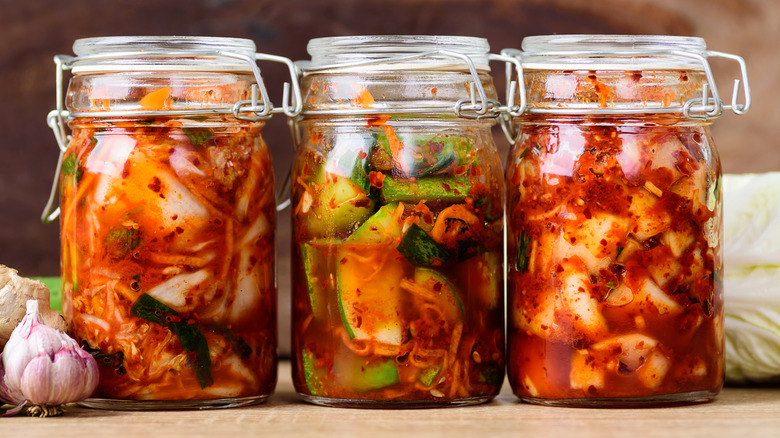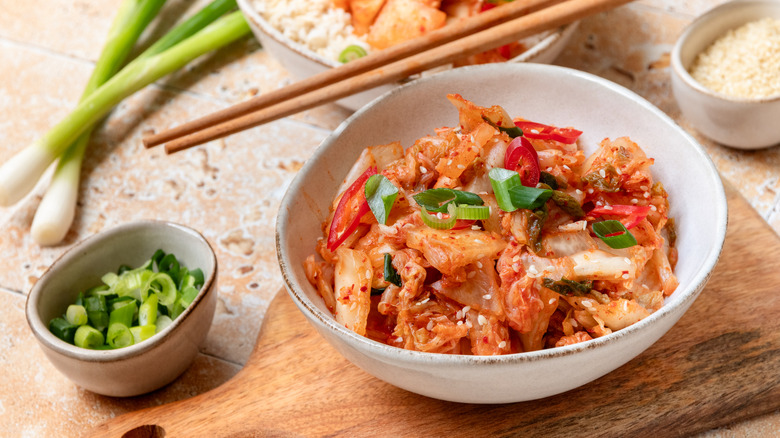The Biggest Mistake You Need To Avoid With Kimchi
Anyone familiar with Korean cuisine has no doubt had kimchi at least once; after all, it is Korea's national dish. This Korean staple is made by fermenting vegetables and seasonings for a spicy, tangy accompaniment to a variety of dishes. (It's also great straight from the container.) Just as there are many varieties of kimchi, there are nearly endless ways to use kimchi, like adding it to butter or mashed potatoes. Making your own at home can be a great way to ensure you always have some on hand. That said, it can take some practice to get it just right.
Mashed spoke with Sungchul Shim, chef at Korean restaurant Kochi in New York City, to get the ins and outs of making kimchi. He explains that the biggest mistake is getting the fermentation all wrong. While fish sauce is added to kimchi to help with flavor and fermentation, incorporating the right amount is key. If you add too much, Shim warns, "It will make the kimchi over-ferment quickly and shorten the lifespan of the kimchi and [it] will spoil."
Other things to keep in mind with this fermented favorite
While getting the ingredients and proportions right is key to properly fermenting kimchi, Sungchul Shim also tells us that temperature is critical. Because kimchi is created through lacto-fermentation, in which Lactobacillus bacteria turn sugars into lactic acid for preserving the veggies (much like sauerkraut), it's basically a form of well-controlled rot. Don't let that scare you, though, because eating fermented foods has many benefits, including improving gut health. The important thing is keeping decay under control — and temperature is key.
"Kimchi needs to be stored in cooler temperatures; if left out in the heat, it can rot," Shim explains. While leaving it out on a cool kitchen counter can be okay in the short term, store your fully-fermented kimchi in the refrigerator to slow down fermentation and keep it from going bad. With the right proportions (try our recipe for homemade kimchi to get you started) and proper storage, you can have kimchi anytime you want it, whether you're enjoying it on its own or using it in a dish like spicy kimchi pasta or kimchi fried rice with spam.

